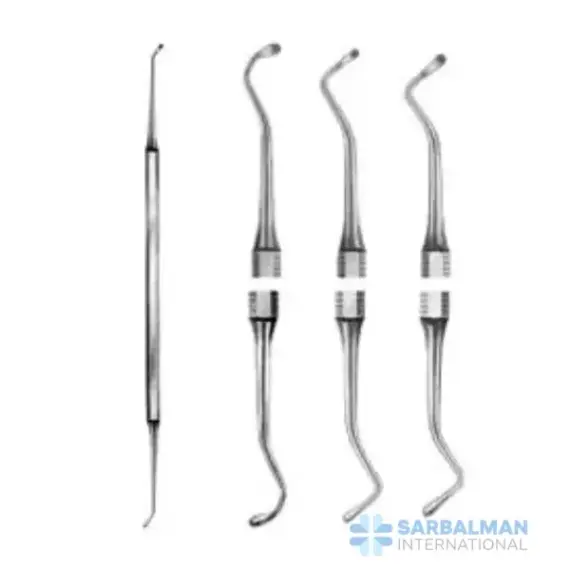Spoon Excavator
Free!
Spoon Excavator is a double-ended hand instrument for precise removal of soft carious dentin, debris, and temporary cement. Spoon-shaped blades and angled shanks deliver excellent access and tactile control, especially near the pulp. A lightweight, textured handle improves grip and reduces fatigue. Made from stainless steel and compatible with steam sterilization, it supports minimally invasive, quiet, and accurate operative dentistry.
Description
A Spoon Excavator is a double-ended restorative instrument used to remove soft carious dentin, temporary cement, and debris with fine tactile control. Each end carries a shallow, spoon-shaped blade with a sharp cutting edge. Contra-angled necks reach pits, fissures, and interproximal areas without blocking the view. The lightweight, knurled handle sits securely in gloved hands. Corrosion-resistant stainless steel cleans easily and tolerates routine steam sterilization when processed under validated protocols.
Key features and benefits:
• Spoon-shaped cutting edges for controlled caries removal close to the pulp
• Double-ended design with complementary blade sizes to match access and cavity depth
• Slim, angled shanks for visibility and reach in posterior teeth
• Lightweight, textured handle for precise, fatigue-free movements
• Durable stainless steel for long service life and reliable sterilization
Typical uses and applications:
• Removing infected dentin and soft debris after caries excavation
• Refining cavity preparations where rotary instruments are risky
• Lifting temporary cement and excess glass ionomer or liner
• Clearing remnants during endodontic access and pediatric ART techniques
• Chairside adjustments in clinics, teaching labs, and outreach settings
Comparison guidance:
• Versus rotary burs, the spoon excavator provides better tactile feedback, less heat, and quieter operation, reducing the chance of over-cutting near the pulp.
• Versus carvers, which shape restorations, this instrument is optimized for cutting and lifting soft material.
Care notes:
• Inspect and sharpen edges as needed to maintain effective cutting.
• Clean and sterilize according to clinic protocols to support infection control.




